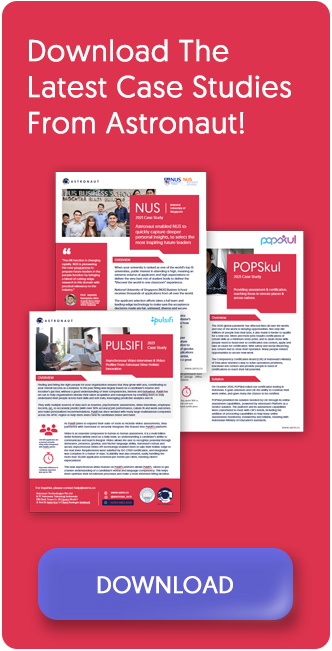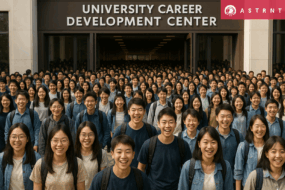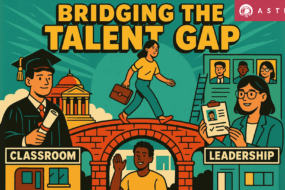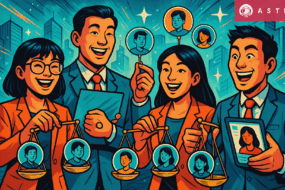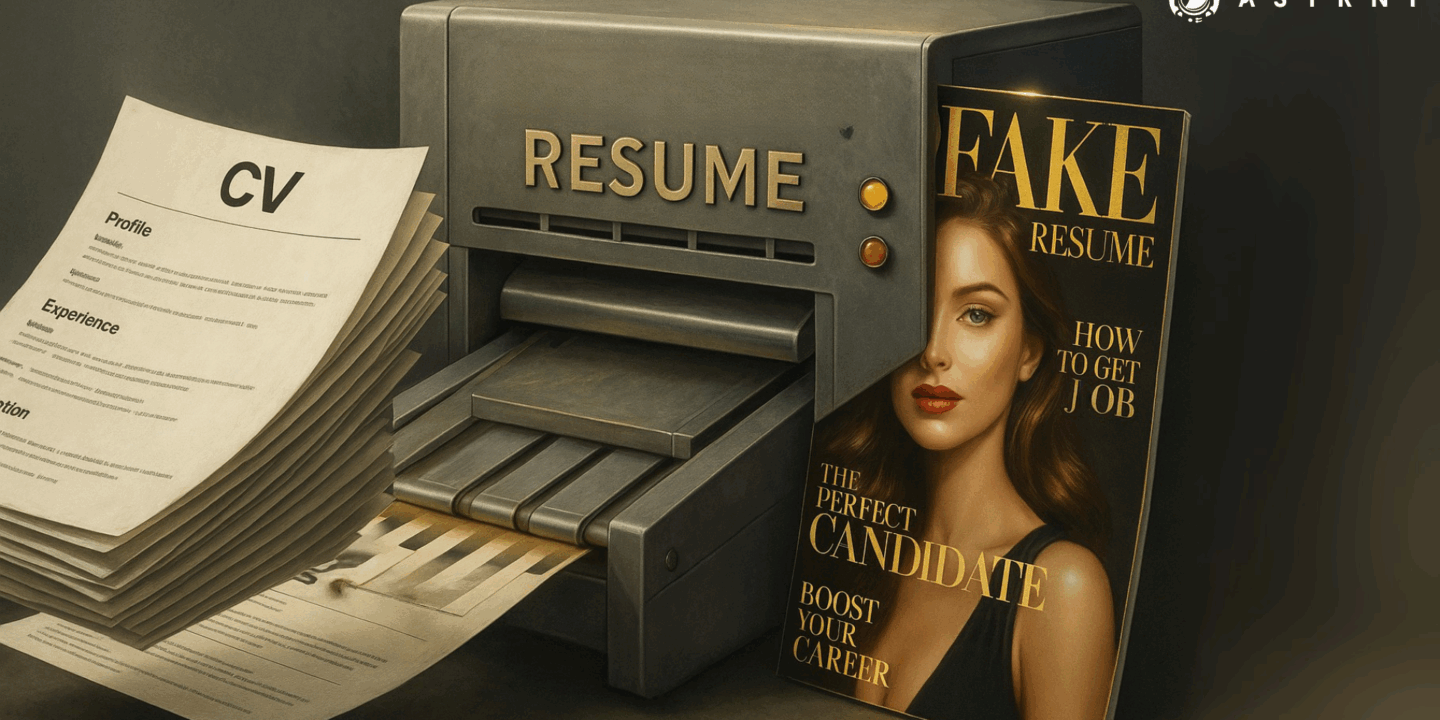
Author: Dira Tjokro | Editor: Intan Khatulistiwa
CVs are Dangerous!
You read it right. CVs are dangerous.
They promise to tell the story of a candidate, but more often, they hide the real one, or in the age of AI, they even tell fairy tales more often than the truth by delivering another polished résumés.
Think you still can trust résumés? Think again!
The Biases That CVs Can’t Shake Off (Until Now)
CVs, the curricula vitae or résumés, were designed in a world with far fewer ways to signal competence. They leaned heavily on school names, job titles, formatting, and “fancy” language. But fast forward to 2025, and that model is unraveling.
Evidence of Bias & Flaws:
Gender & Race Bias in AI Résumé Screening
A recent study by Brookings showed that automated résumé screening tools can exhibit gender, race, and intersectional bias, disadvantaging racial or ethnic candidates in particular. These tools often encode subtle cues, names, linguistic style differences, that correlate with demographic traits. When hiring systems rely on these, they unintentionally reinforce inequity.
Persistent Implicit Bias from Conventional CVs
The classic “name bias” experiment by Bertrand & Mullainathan found that White-sounding names got ~50% more callbacks than otherwise-identical rrésumés with African-American-sounding names. That result isn’t new, but very relevant: CVs are not neutral. They carry historical bias embedded in how we evaluate education, networking, and prestige.
Why AI Makes It Worse, Not Better
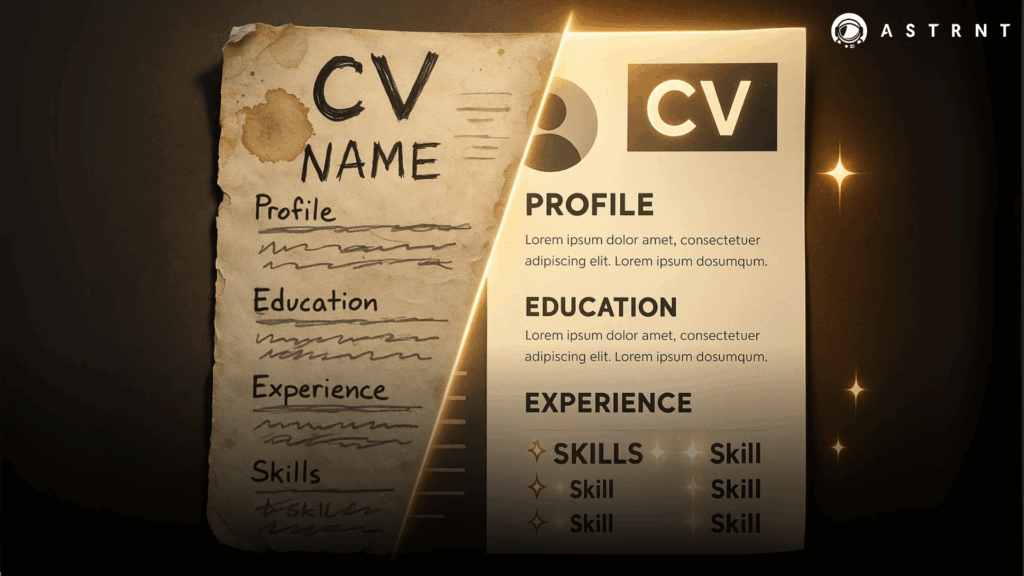
Generative AI has supercharged résumé polishing. With just a few prompts, candidates can keyword-stuff, inflate responsibilities, and churn out templated “achievements” that look flawless on paper.
The result? Recruiters wade through lookalike CVs, struggling to tell apart genuine capability from over-engineered presentation.
A SmartResume survey found AI has “homogenised and flattened applications overall,” making it harder than ever to spot real talent or unique skills. Instead of reflecting identity, CVs are optimized to trick ATS filters or sound impressive at a glance.
The AI CV arms race isn’t about skills anymore. It’s about who can prompt better.
CV Fraud in Reality
The danger of CVs isn’t just theory, it’s already burned companies. One of the most notorious cases was Scott Thompson, the former Yahoo CEO, who was forced to resign when it was revealed he had fabricated a computer science degree on his resume. That single line, unchecked for years, shaped his career trajectory and credibility, until it unraveled into a public scandal. And this isn’t limited to high-profile executives.
According to Lloyd Staffing, recruiters today are increasingly wary of resumes that look too perfect: career services have reported a surge in AI-generated or over-polished CVs that, while visually flawless, often lack real personality, credible stories, or concrete details.
Whether it’s high-stakes fraud or subtle AI embellishment, the pattern is the same, CVs trick us with surface signals, and the cost of trusting them can be wasted hires, reputational damage, and missed opportunities for real talent.
ASTRNT Says: We Don’t Fully Trust CVs
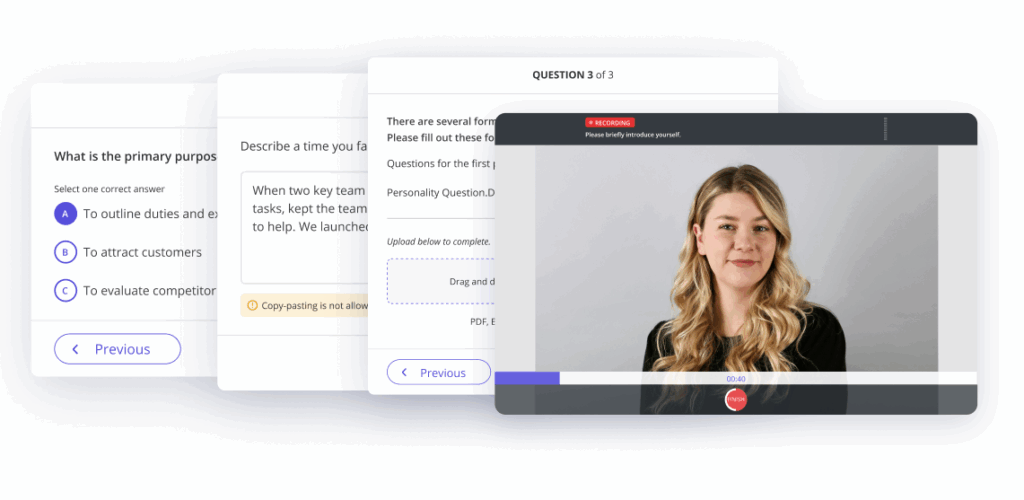
At ASTRNT, we’ve gone through assessment-first hiring. Instead of filtering candidates by titles, schools, or pedigree, we start by measuring what really matters: performance on real tasks, structured simulations, and problem-solving assessments.
This approach is fairer, because it reduces bias and lets people with unconventional backgrounds shine, candidates who might otherwise be filtered out just because their CV doesn’t “look right.” It’s also faster, because assessments cut through the noise of endless CV screening, giving recruiters a clear view of top performers within days, not weeks. And it’s more predictive, since assessments that evaluate judgment, adaptability, and critical thinking correlate far more strongly with on-the-job success than keyword-stuffed resumes ever could.
Assessment-first isn’t just a philosophy, it’s a faster, fairer, and more accurate system we’ve built. And it’s already proving that the future of hiring should look beyond CVs.
How It Comes Alive inside ASTRNT

Through our platform dashboards, you don’t just get a ‘pass/fail’ signal, you see real scores on thinking, judgment, technical decision-making, soft skills, and more. Every candidate’s profile is transparent, with metrics you can directly compare. No mystery. No guessing. Just clear data that makes talent decisions faster and more confident.
Tired of polished CVs that crumble in interviews? See how ASTRNT’s assessments cut straight to real capability!
Here’s the bottom line…
AI has made them more polished, but not more reliable. Bias still seeps through. Real ability remains invisible behind prestige and format.
If you want to lead hiring that’s fair, modern, accurate, you can’t afford to keep relying on CVs as your main filter. You need something better.
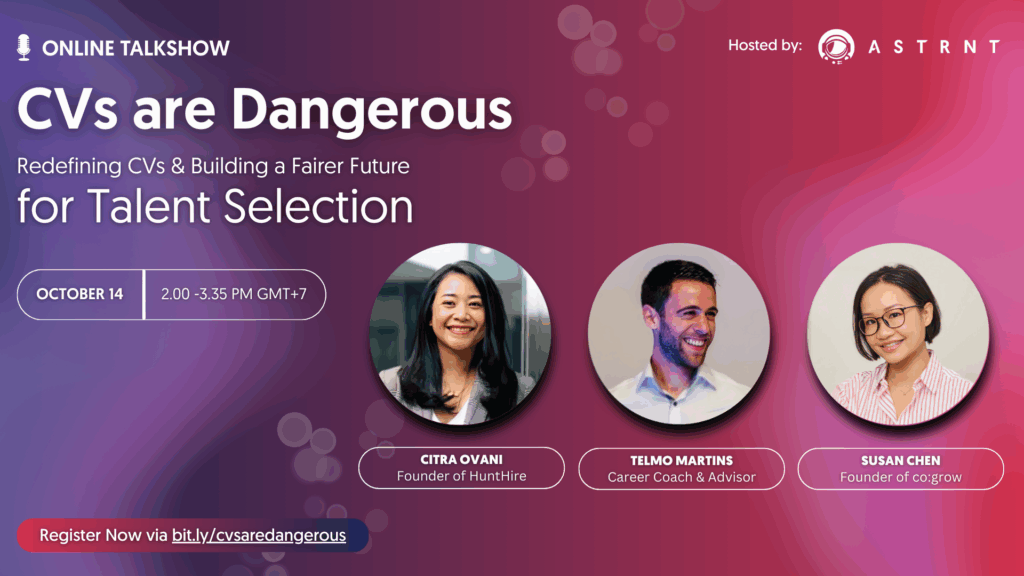
And that’s what CVs Are Dangerous on October 14 is all about.
Register now to hear from Talent Acquisition Leaders like Citra Ovani, Susan Chen, and Telmo Martins who are ready to show what recruiting looks like when we move beyond CVs.
Spots are limited. Be part of the change!

